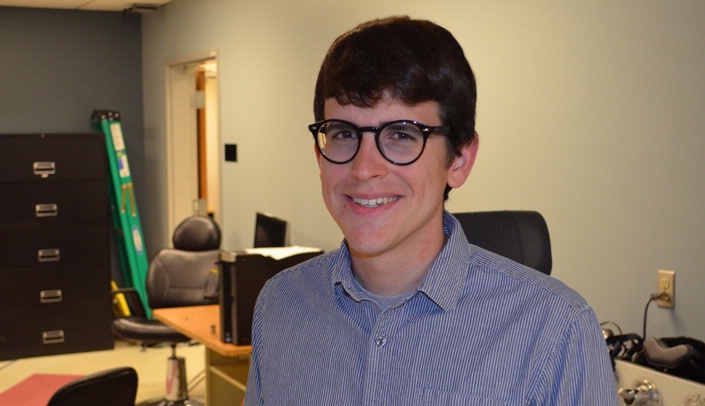Jamie Gehringer, a third-year Ph.D. student in the lab of Max Kurz, Ph.D., is the recipient of a Nebraska NASA fellowship.
The fellowship is awarded to researchers in the University of Nebraska system who are working on projects that could relate to goals that NASA’s trying to achieve. Gehringer was one of three UNMC researchers to receive the fellowship.
Gehringer is exploring the effects of transcranial direct-current stimulation on brain activity.
“Transcranial direct current stimulation, or tDCS, is a popular neuromodulatory technique right now, but there’s not a lot of work on what it actually does to affect brain activity or what actually happens,” he said. “The idea is that it changes the excitatory weightings of the neurons beneath where these stimulation pads are.”
According to Gehringer, behavioral data shows that tDCS can increase the rate at which a subject learns different tasks.
“We focus mainly on motor tasks,” he said. “What we’re trying to look at is what it actually does to certain brain responses that are associated with motor learning.”
NASA’s interest, Gehringer said, is due to documented effect of microgravity on neuroplasticity in long-term stays in space, such as on the international space station or during a potential mission to Mars.
“So our idea was that we could look into the effects of tDCS on these neural populations, and then it could potentially be used as a medical strategy to reduce these degradation effects,” Gehringer said.
Gehringer, who is starting his third year as a Ph.D. student, will present the results of his research at the Nebraska NASA annual meeting.
He started as a graduate research assistant at MMI in his final undergraduate year.
“My undergrad was in computer engineering, so my interests were in brain-computer interfacing and using those technical skills to develop adaptive and therapeutic technologies, so I got really drawn to the neuroscience side,” he said. “We do a bunch of brain imaging and try to use that information to shape therapy, and so it was that kind of research strategy that really drew my interest.”
